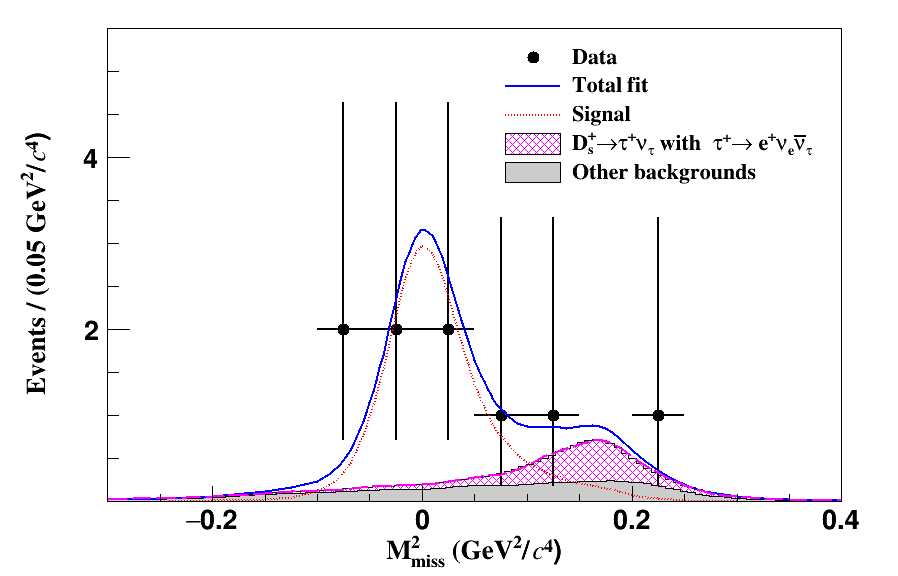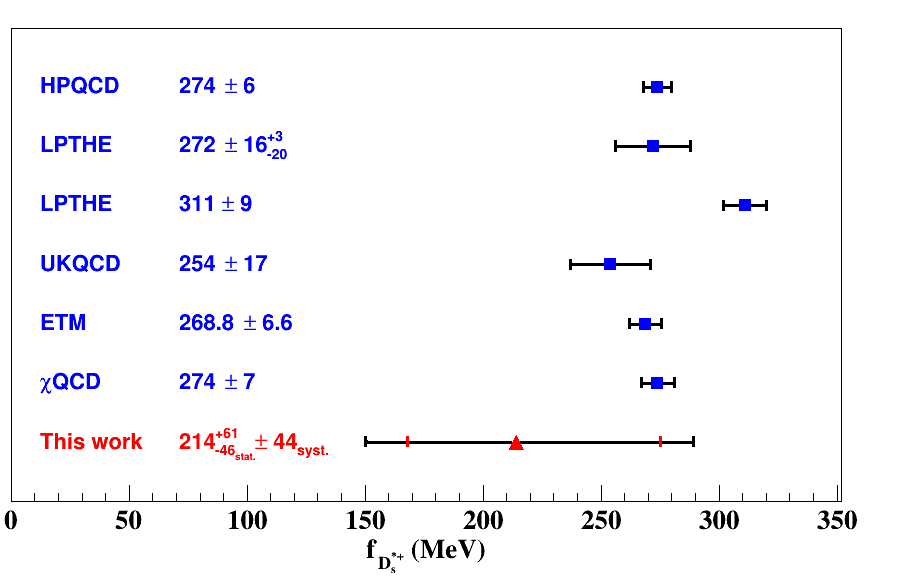

The first experimental study of the weak decay Ds*→eνe with entangled Ds-Ds* pairs has been presented by BESIII collaboration. The results are published in the journal Phys. Rev. Lett. 131, 141802 (2023) on Oct. 6 2023.
The leptonic decay of a charm-strange meson in the Standard Model (SM) can be illustrated by the annihilation of the initial charm and strange quark pair into a virtual W±, which then decays to a lepton and a neutrino. Experimental studies of these decay processes are important to test the lattice QCD calculations and the unitarity of the quark-mixing matrix, CKM matrix. Additionally, measurements of the branching fractions of charm-strange mesons decaying into different families of leptons allows for the verification of lepton flavor universality in the charm sector. Currently, extensive theoretical and experimental researches have been presented on the weak decays of ground-state charm-strange mesons (e.g. Ds), leading to precise validations of the SM. However, for excited-state charm-strange mesons (e.g. Ds*), there have been relatively few theoretical studies, and no experimental study of their weak decays has yet been reported because of the tiny branching fractions (~10-5). However, as a vector meson, the intriguing aspect of Ds* is that its purely leptonic decay is not affected by helicity suppression.
Based on 6 million entangled Ds-Ds* pairs from e+e- collisions, BESIII collaboration performed a search for the decay process Ds*→eνe. The experiment employed double-tag method. When the center-of-mass energy of the e+e- pair is near the mass threshold of Ds-Ds* pair, the cross-section of e+e-→DsDs* increases significantly. According to quantum entanglement effect, the Ds and Ds* are produced in pair. In an event where a Ds meson is fully reconstructed and comes directly from the e+e- collision, the Ds* meson decaying to eνe can be searched for in the recoiling system. Figure 1 shows the result of the search for the Ds*→eνe process, with a significance of 2.9σ. Here, the square of the neutrino's invariant mass, obtained from the recoil mass of all detected particles, serves as the observable in the study. The branching fraction is determined to be (2.1+1.2-0.9 stat ± 0.2 syst ) X10-5. Taking the measured branching fraction and the total decay width of Ds* obtained from LQCD calculations as inputs, the decay constant of Ds* is determined to be (214+61-46 stat ± 44 syst ) . Figure 2 shows the comparison of the decay constant of Ds* obtained in this work and LQCD calculations. Conversely, taking the measured branching fraction and the decay constant of charm-strange mesons obtained from LQCD calculations as inputs, the upper limit of the total width of Ds* is indirectly constrained from the current 1.9 MeV to sub-keV level (~122 eV). This work opens an avenue to study the weak decays of excited-state charm-strange mesons in experiments.

Fig. 1: The result of search for Ds*→eνe

Fig. 2: Comparison of the decay constant of Ds* obtained in this work and the LQCD calculations
The PRL publication: https://link.aps.org/doi/10.1103/PhysRevLett.131.141802